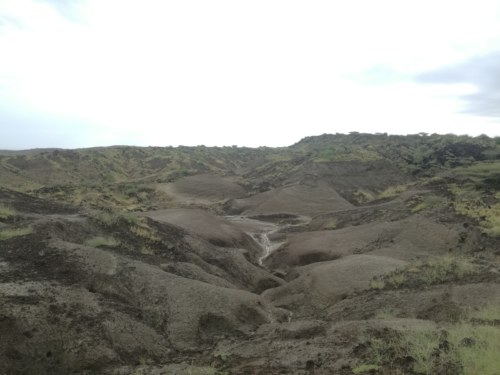
On Wednesday morning, we packed and left for Koobi Fora for an overnight camping trip. Koobi Fora sits on the eastern shores of Lake Turkana, in Sibiloi National Park. The sediments in the region preserve numerous mammalian fossils, making it an important region for paleoanthropological research. Our first stop was at Il Allia river/Laga Bura Hasuma, where Dr. Feibel explained the deposition process and source of sediments in the Laga. The sediments are mainly quartz, feldspar, and basaltic gravel eroding from the Koobi Fora Formation. We hiked to the nearby outcrops in Area 123 before coming back to the Laga, where we had our lunch. We made another stop at Area 107, where students learnt about the paleogeography of the region by examining sandstones to implicitly determine the paleocurrents or ancient rivers.
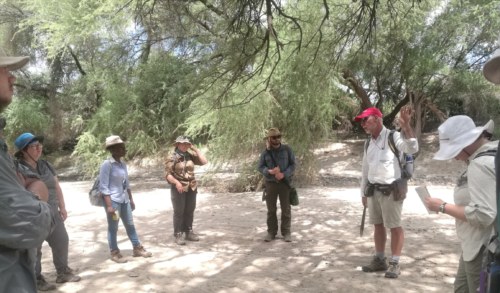
Dr. Feibel discusses sediment deposition processes in the Laga Bura Hasuma. Photo credit: Medina Lubisia.
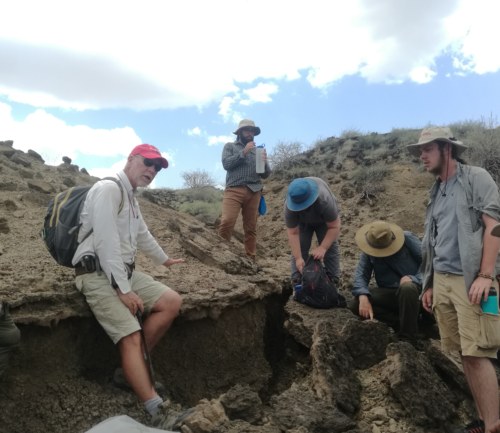
Dr. Feibel explains the importance of marker beds in stratigraphy. Photo credit: Medina Lubisia.
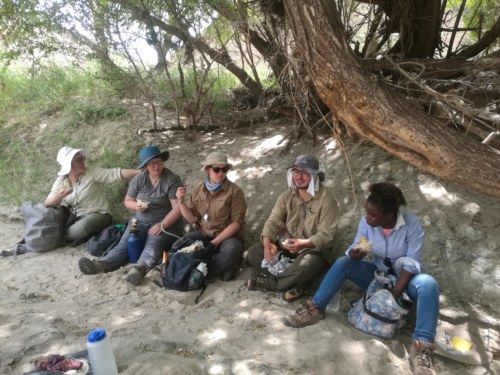
Students having lunch in the Laga. Photo credit: Medina Lubisia.
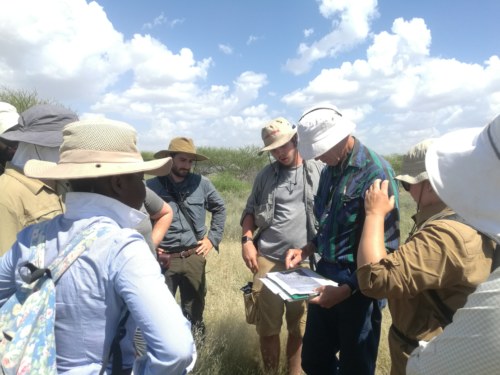
Dr. Raynolds discusses the paleogeography of Area 107. Photo credit: Medina Lubisia.
The following day was spent in Area 102 and 103 respectively. The strata in Area 102 are mainly the Upper Burgi and the lower part of the KBS Member. Cleopatra shells dominate the C4 stratum in the region, which is an implication of an ancient beach environment. Galana Boi deposits are also present, characterized by diatomaceous silts, and molluscan shells implying stages of recession as the lake dried up.
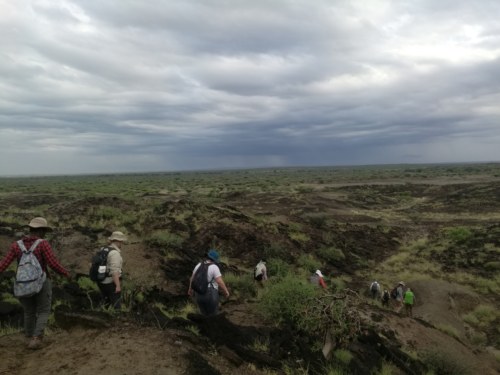
Students start their hike in Area 102. Photo credit: Medina Lubisia.
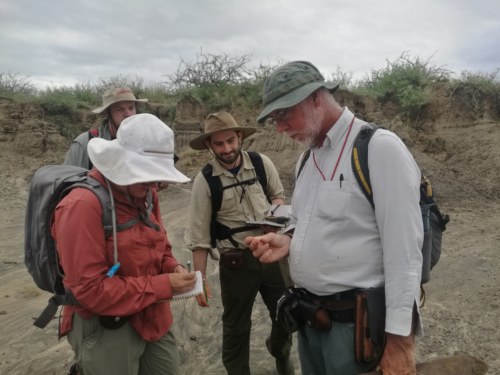
Dr. Feibel examines the cleopatra shell found by Amber. Photo credit: Medina Lubisia.
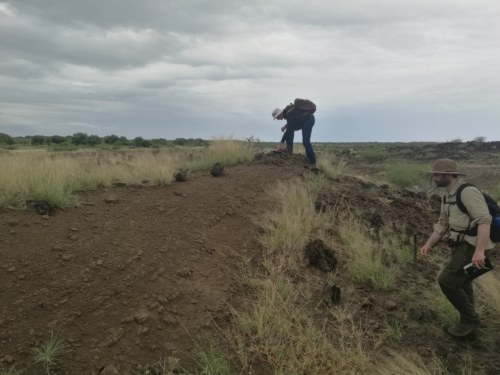
Dr. Raynolds and Zak take a closer look at the Chari tuff in Area 102. Photo credit: Medina Lubisia.
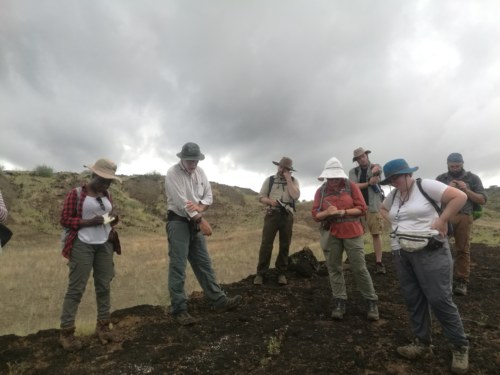
Dr. Feibel describes the C4 stratum with molluscan shells. Photo credit: Medina Lubisia.
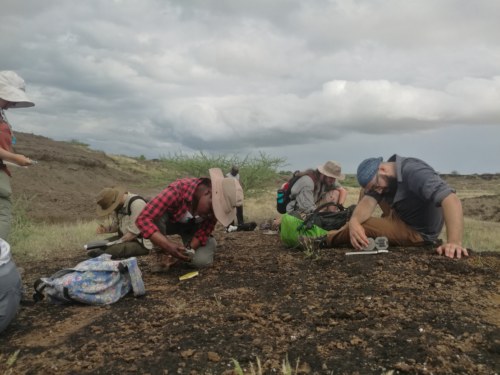
Students measure the strike and dip of the molluscan sandstone. Photo credit: Medina Lubisia.
The “badlands” of the KBS Member awaited us in Area 103 later that afternoon. To understand the changing facies in the paleoenvironments, Dr. Feibel led the students in examining the lacustrine deposits of the Lorenyang Lake. An interesting part of the hike was the Burgi Unconformity. An unconformity represents a gap in the geological record, as a result of interruption during sediments deposition. The tilting of the quadrant of the basin caused by Hamar Uplift in the northeast, resulted in the formation of an angular disconformity, that later graded into an erosional disconformity in the Burgi Member.
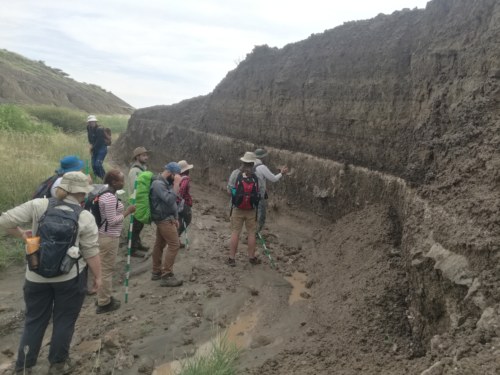
Students examining an outcrop. Photo credit: Medina Lubisia.

Dr. Feibel indicates eroded surface in the strata. Photo credit: Medina Lubisia.
We travelled back to Ileret on Friday morning. As we end the Geology course, a new challenge awaits students in applying their geological knowledge to understand context in the next course, Vertebrate Paleontology.
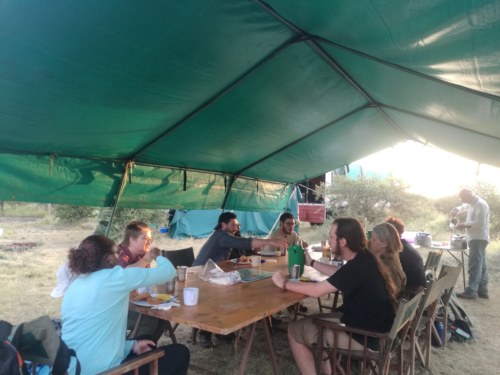
Students having breakfast at the camp. Photo credit: Medina Lubisia.
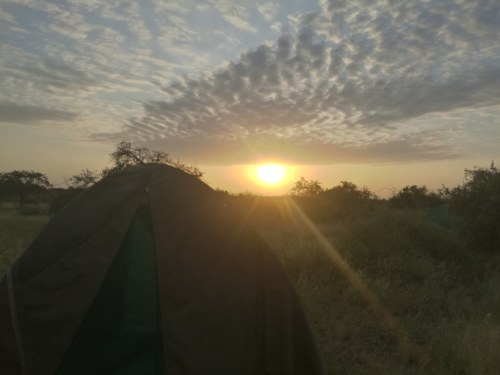
Sunrise at our camp in Koobi Fora. Photo credit: Medina Lubisia.
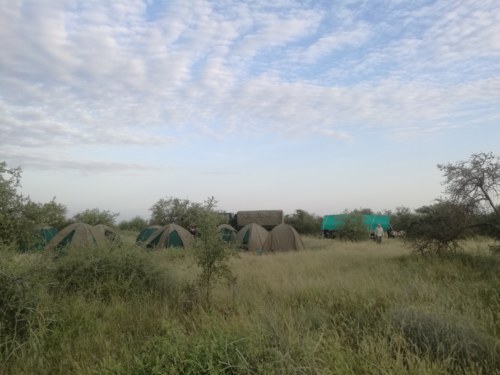
Tents at our fly camp. Photo credit: Medina Lubisia.





